Thule Subterra Convertible Carry-On Review
The Thule Subterra Convertible Carry-On's versatility as a duffle, backpack, and even a laptop sleeve is hindered only by comfort and accessibility issues.
Our Verdict
Save time. Get access to brief summaries of our reviews so you can browse and make decisions more efficiently.
Pros
- Well-structured and put together
- Includes a laptop sleeve that can be carried separately
- Removable crossbody strap handles the 40-liter size well
Cons
- Compartments’ accessibility hindered due to layout
- Backpack straps aren't the most comfortable to use
- A packed out laptop sleeve can bulge out the back panel
Technical Details
-
Capacity
40l
-
Weight (lb)
3.5 lb (1.6 kg)
-
Denier
800D
-
Dimensions
21.7 in x 13.8 in x 8.3 in (55.1 x 35.1 x 21.1 cm)
-
Notable Materials
Nylon, Duraflex Hardware, YKK Zippers
-
Manufacturing Country
Vietnam
-
Laptop Compartment Size
16"
-
Warranty Information
Buying Options
Full Review
Have we ever told you about how convenient it is to travel with just a carry-on? A million times already? Well, let’s make that a million and one times because the subject of this review is Thule’s Subterra Convertible Carry-On. The name says it all, though a quick glance at our Carry-On Compliance meter will let you know if it meets a particular carrier’s restrictions.
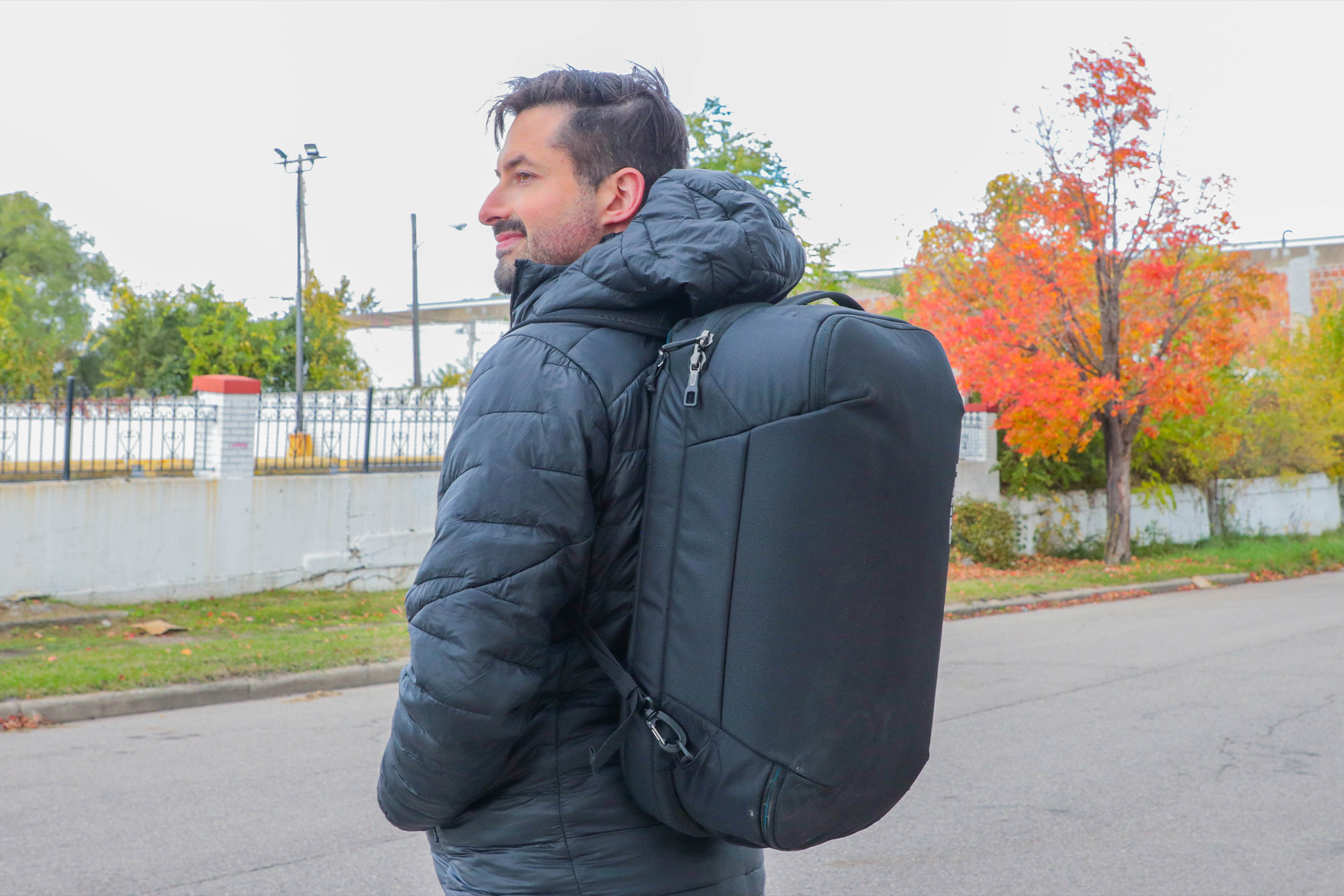
It’s on the bigger side of the carry-on size spectrum at 40 liters, hence the seemingly low compliance rating. But that large size comes with a feature-rich system, as the Subterra Convertible is technically two bags in one: a backpack/duffle plus a laptop sleeve. We have a bunch of notes regarding carrying comfort and the overall flow of the bag’s features, so let’s get into it.
Materials & Aesthetic
From the front, the Subterra Convertible Carry-On has a rather bare face, with only the logo being the distinguishing feature. Due to its large size, the bits sticking out of the sides like the handles and the zippers don’t really take away from the plain looks; they’re barely noticeable from certain angles. Is the subdued theme a bad look, though? To us, it’s not. We find minimalist designs appealing as long as they’re done right, and Thule’s “don’t go overboard with the drafting pen” approach certainly is (in our books).
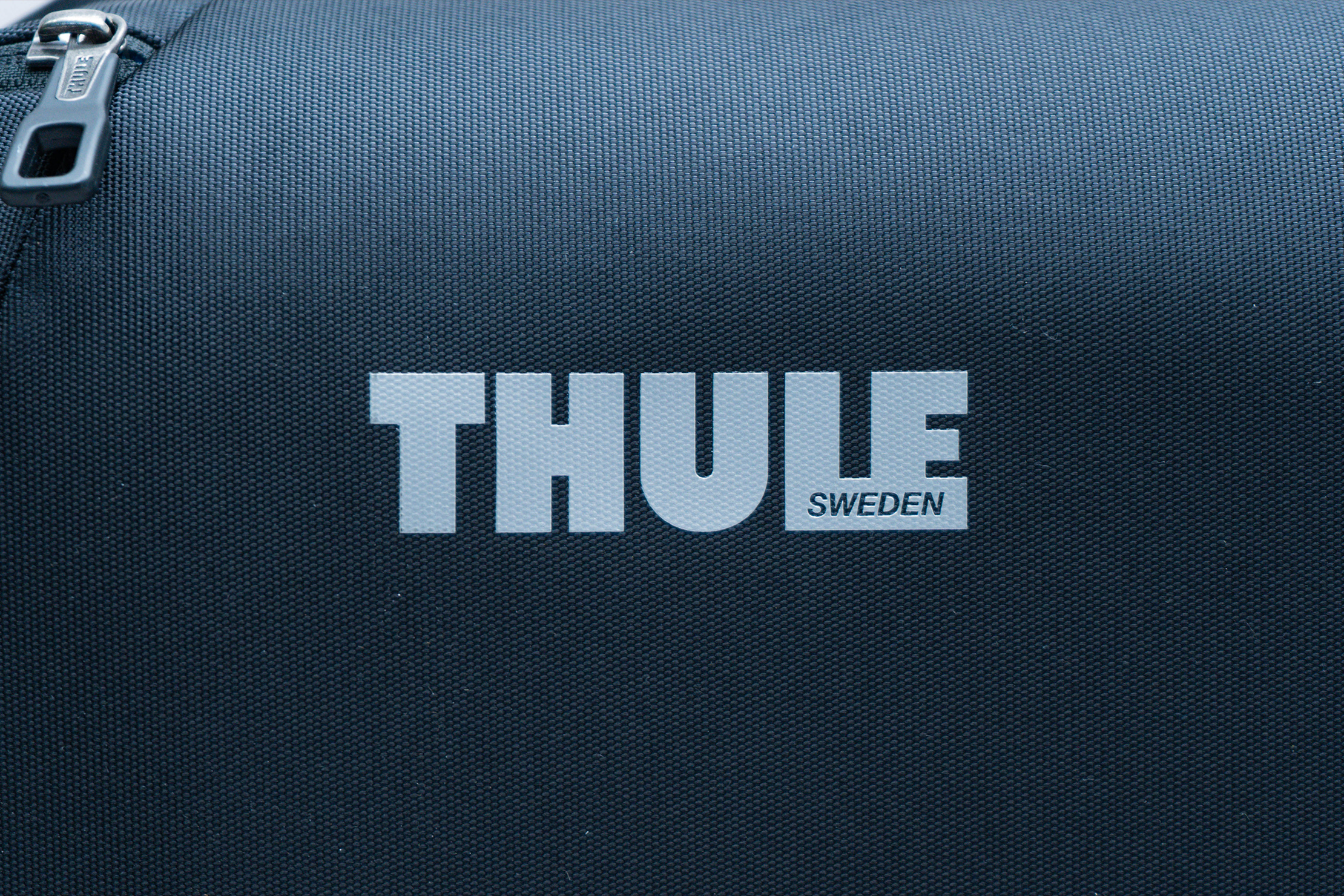
At the time of writing, there are four colorway options available: Mineral (dark blue), Dark Forest (dark green), Black (the one we have), and Ember (maroon). Yes, all colors are on the dark side, with the punchiest color being Ember, but not by much. We’ll stick with our usual pick of black, as it’s pretty easy to pair with even the wackiest-colored clothes in our wardrobe.
Don’t be fooled, though. While the Subterra Convertible’s styling flies below the radar (that’s despite the large proportions), once you get a feel of the bag’s build quality, it leaves a noteworthy impression. Even when it’s completely empty and hollowed out, the Subterra Convertible is able to stand on its own. It’s not quite as stable as something like the Osprey Radial with its integrated kickstand, though for a bag teetering at 40 liters, it’s stable enough for us.
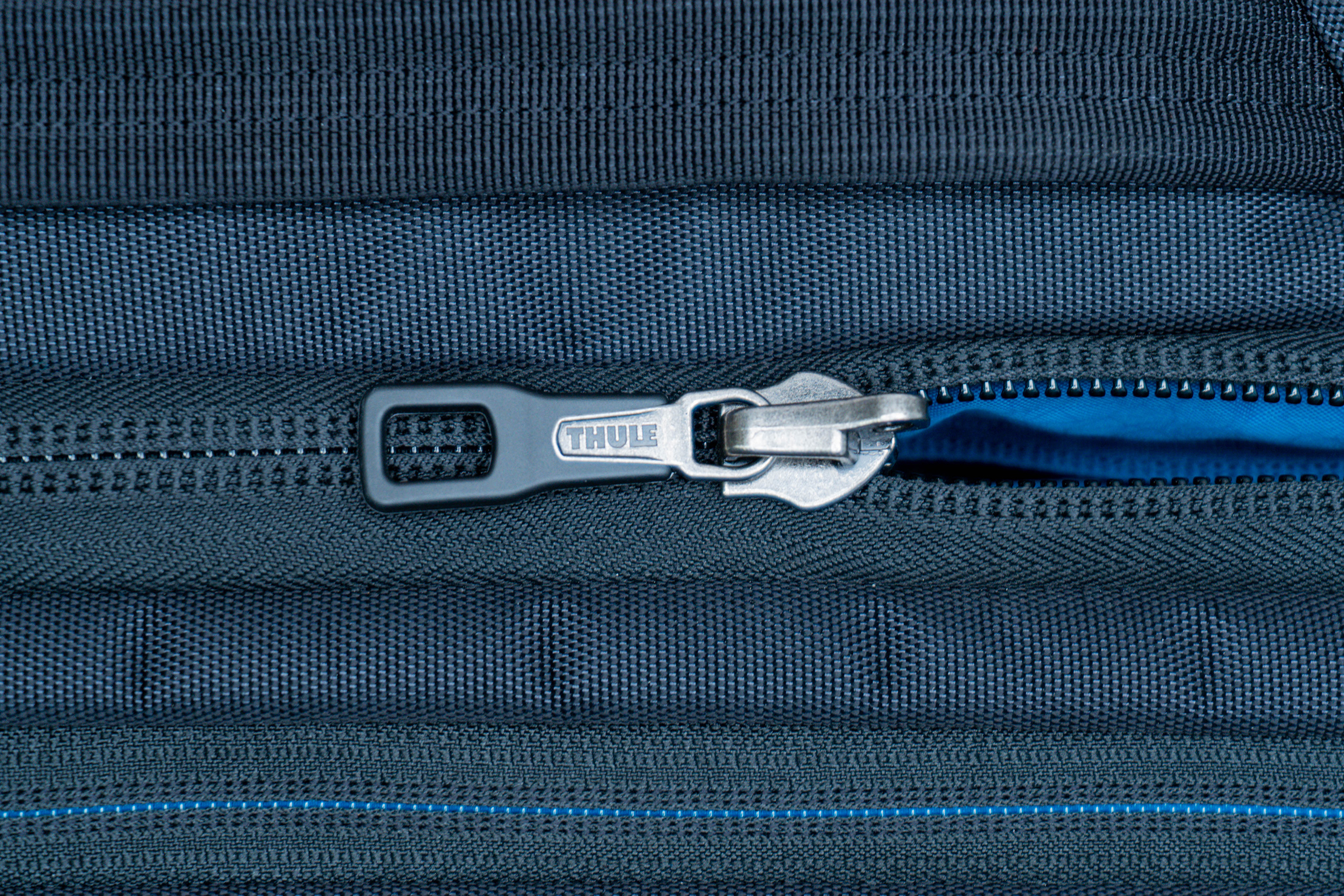
We’ll get more into its ability to stand in the later sections. For now, it serves as a good indicator of just how solid this bag is. The outer 800D nylon shell is not the heaviest denier we’ve seen on a travel backpack, but it’s reliably backed up by the thick inner foam structure. Not only does this help with preventing clothes from getting crushed, it also maintains the handsome form of the Subterra Convertible even as you’re walking through a busy airport.
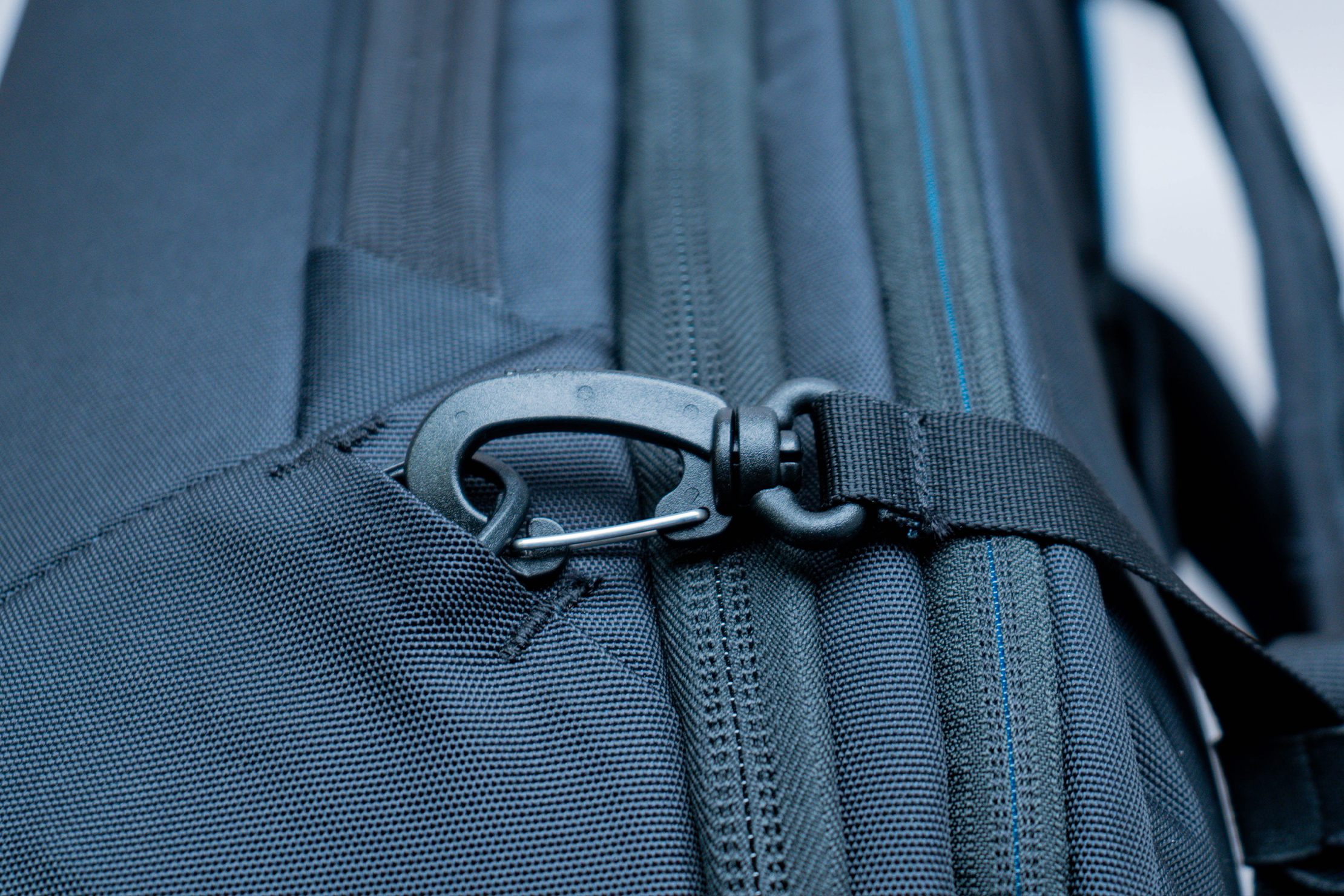
The experience of zipping, clipping, and adjusting the Subterra Convertible isn’t bad either. The zippers are from the ever-reliable YKK brand, while the rest of the hardware is courtesy of Duraflex, a brand that’s equally reputable. We rarely, if ever, have problems with hardware from these brands, and the zippers, clips, and adjusters on the Subterra Convertible don’t buck the trend. They do their job well, as expected. However, overall accessibility and comfort aren’t just dependent on the ingredients. Thule made excellent choices in materials, from the 800D nylon all the way down to the zippers and hardware. But now, let’s see how the bag carries.
External Components
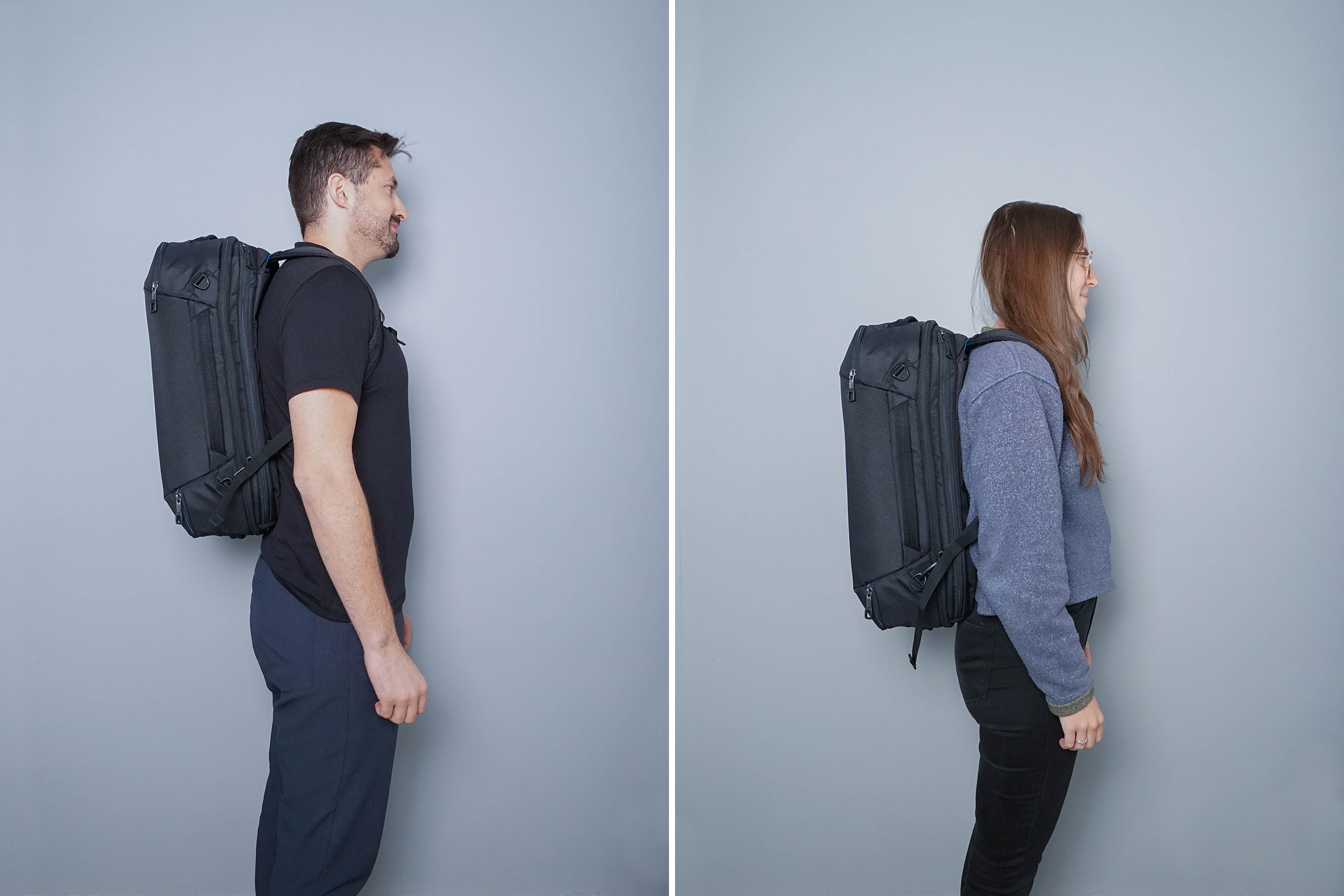
We’ll start with the handles. There are three of them on the Subterra Convertible: one at the top, one on the right, and one at the bottom. We’re fans of this very thoughtful design choice because it lets us shuffle and slide the bag around while we have it open. Spoiler alert: this bag does open fully clamshell-style like a typical suitcase. Pulling on one of the three handles is a much more elegant solution than pushing it around on a hotel bed. Okay, it’s arguably not the biggest quality-of-life improvement out there, but it’s an improvement nonetheless.
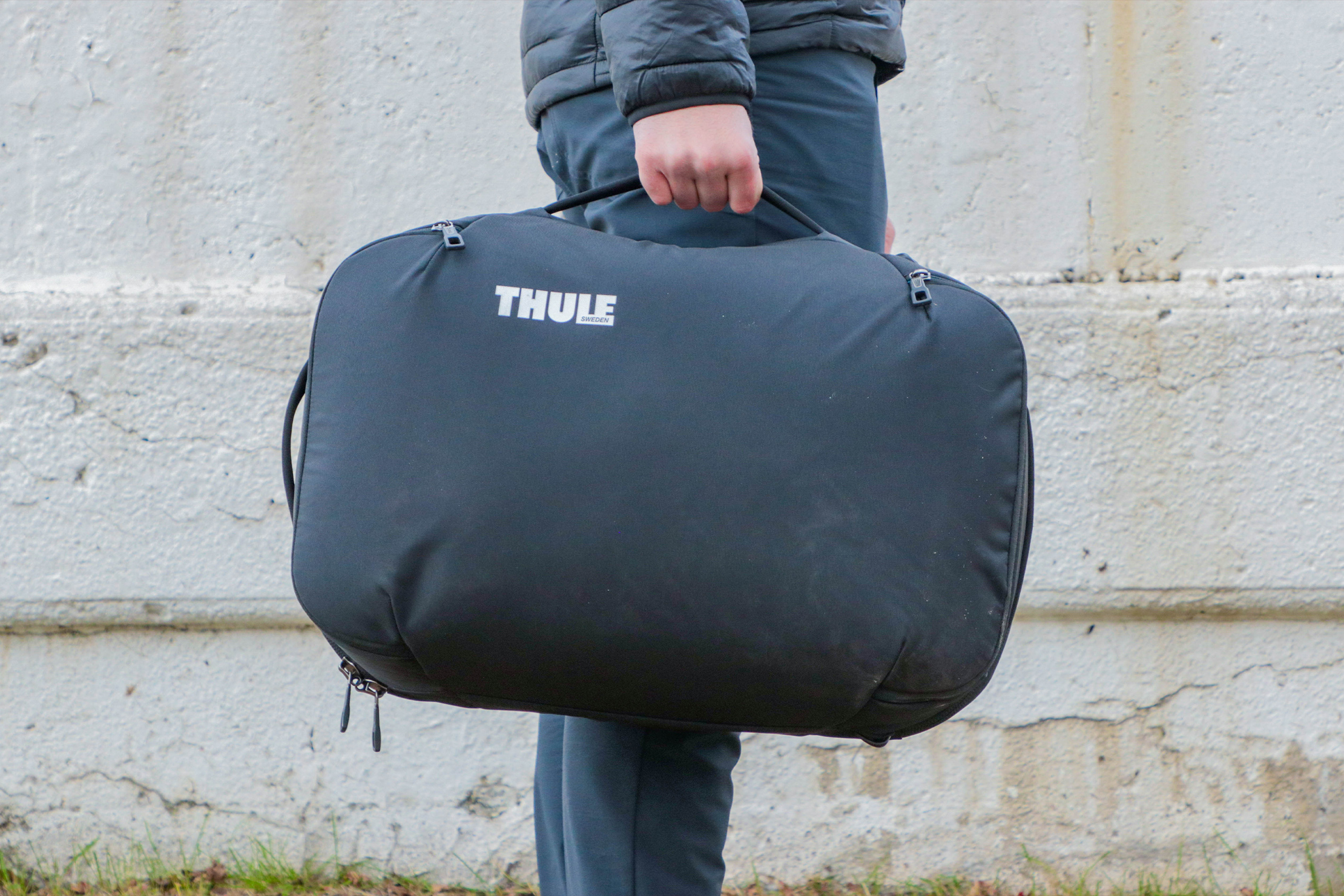
It shows Thule’s attention to detail at small levels. Another good example is how the side handle itself is stitched into the bag. It’s at an angle and centered along the side. This combo makes for a well-balanced carry by hand. We’re not exaggerating, either. We’ve tested plenty of bags that have off-center side handles, and that’s enough to make them tilt to one side. There’s also no bowing issue even when we have the bag fully packed out; a good summary of the bag’s structure and handle design working together.
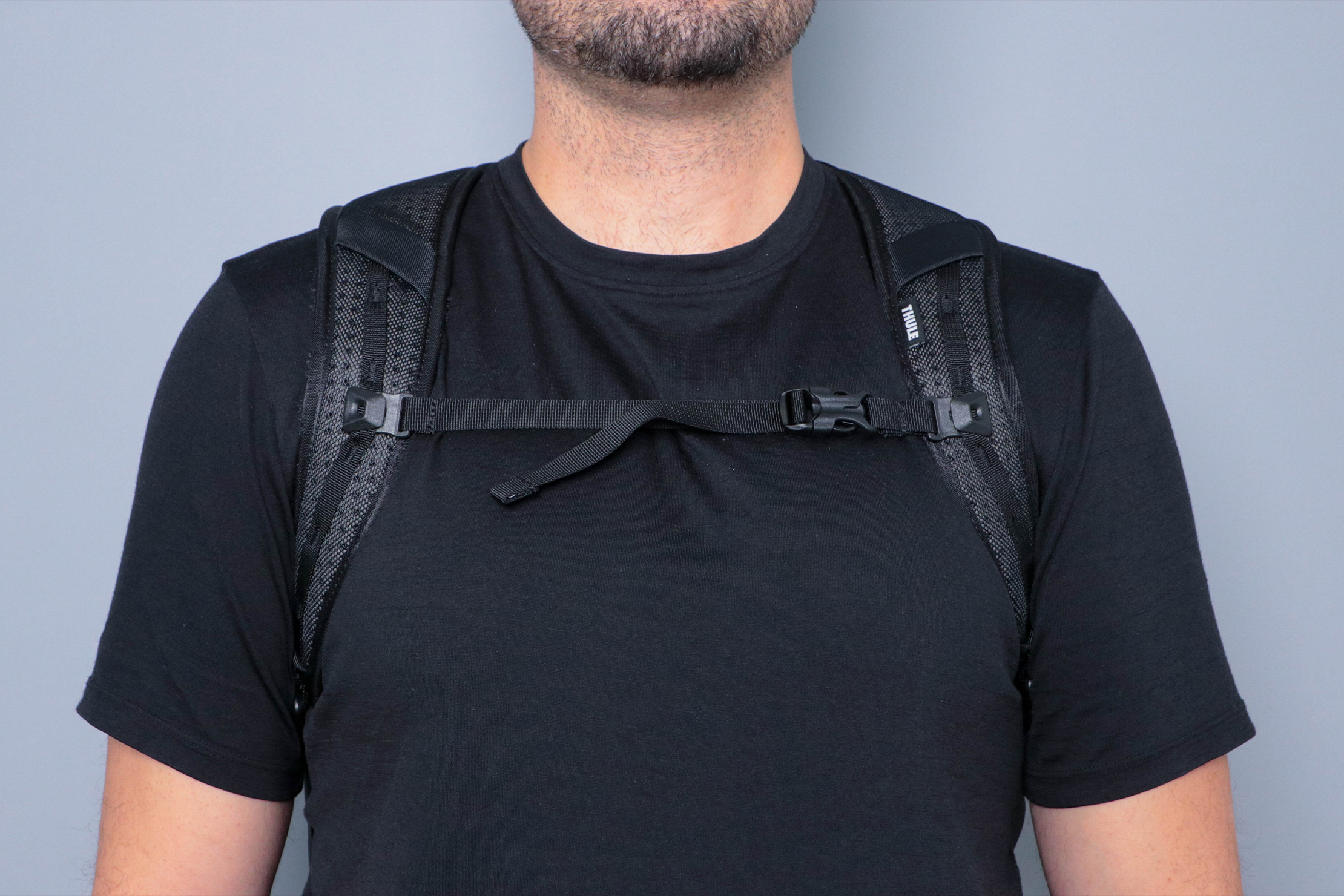
As the convertible part of the name suggests, there are two ways to carry the Subterra Convertible: backpack-style and crossbody-style. The backpack straps are stitched along the top, while clips attach the ends to D-rings on either side near the bottom. The clips are very tactile, and they have a good balance of being easy to engage and staying clipped on. In other words, we don’t have a problem with the straps staying in place despite their detachable nature. The straps stow away neatly behind the back panel, similar design to the Tom Bihn Techonaut 30 and Osprey Arcane Duffel. Like those two, the stowaway compartment is zippered, so it can serve as another space to put flat items in a pinch.
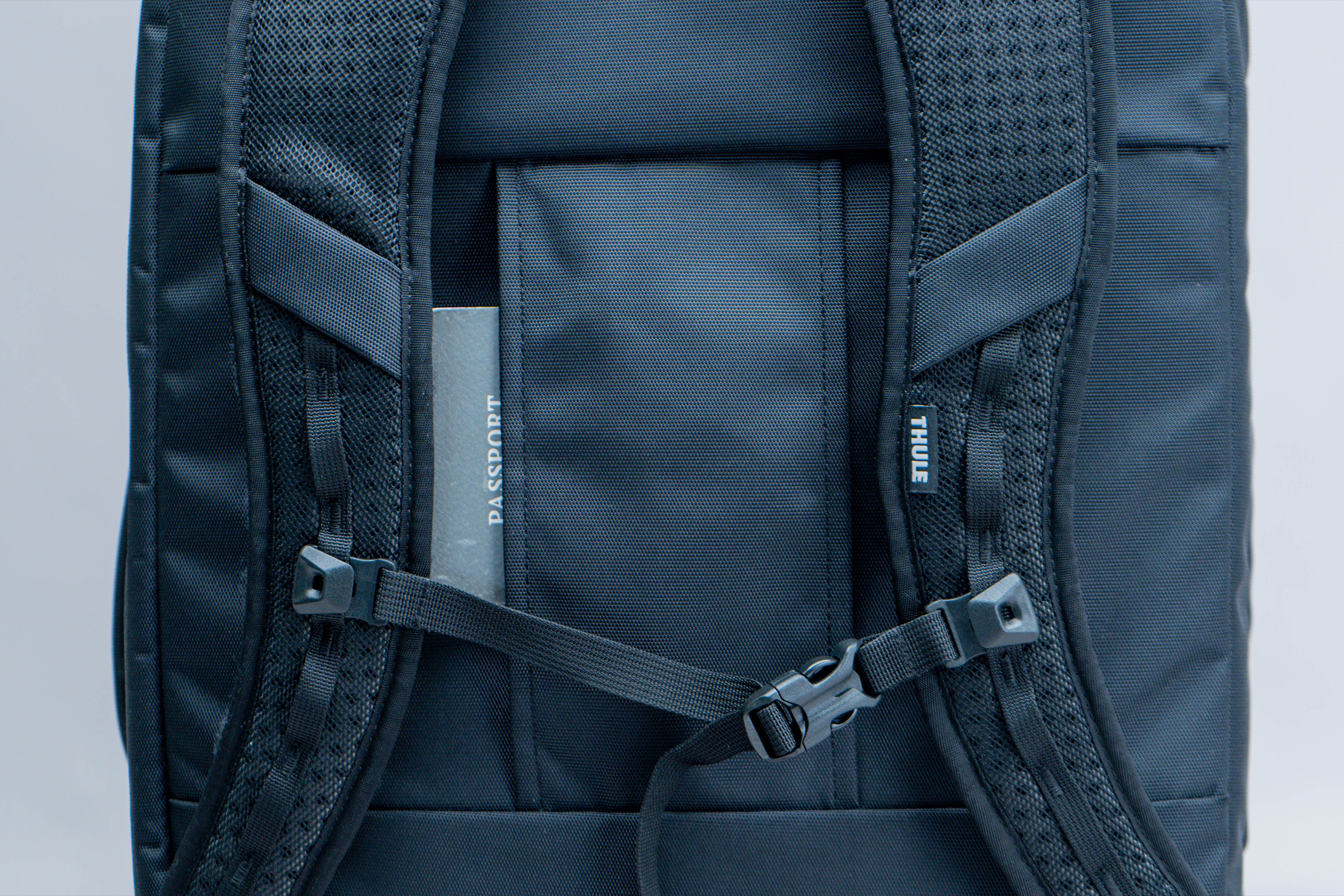
The back panel has a trick up its sleeve, too. There’s a low-profile luggage pass-through that sits flat against the fabric. It makes the bag sit on a roller horizontally, and some find this not optimal, especially for backpacks because sideways orientation can mess up organized clothes inside. However, because the Subterra Convertible can be oriented in both backpack and duffle bag styles, the vertical pass-through gets a nod from us. Where’s the trick we mentioned? Behind the pass-through is a hidden compartment that fits passport-sized items. The pocket is deep but not very spacious for bulky items like thick wallets.
Though the back panel is relatively well-cushioned, we found that carrying the Subterra Convertible as a backpack is not the most comfortable way. However, we can’t quite pin down exactly why. It could be the lack of load lifters, the fact that we have a laptop onboard, the way the straps are positioned, our body type, or a combination of all of those. Your mileage may vary, as everyone’s size and fit differ, but the backpack mode definitely isn’t the most optimal way for our usage.
Thule Subterra Convertible Carry-On | Options are always nice to have.
The straps themselves have a decent amount of spongy foam padding, and they come with a thin sternum strap. This sternum strap hooks onto webbings along the straps and clips in the middle. It’s not our favorite style, but it works well enough for a more secure fit. Lastly, the backpack straps’ adjusters come with elastic strap keepers to keep the slack in check. On the other hand, the sternum strap lacks one, so it’s a bit dangly. Overall, it’s not the worst backpack carrying experience we’ve ever had, but we think there’s room for improvement.
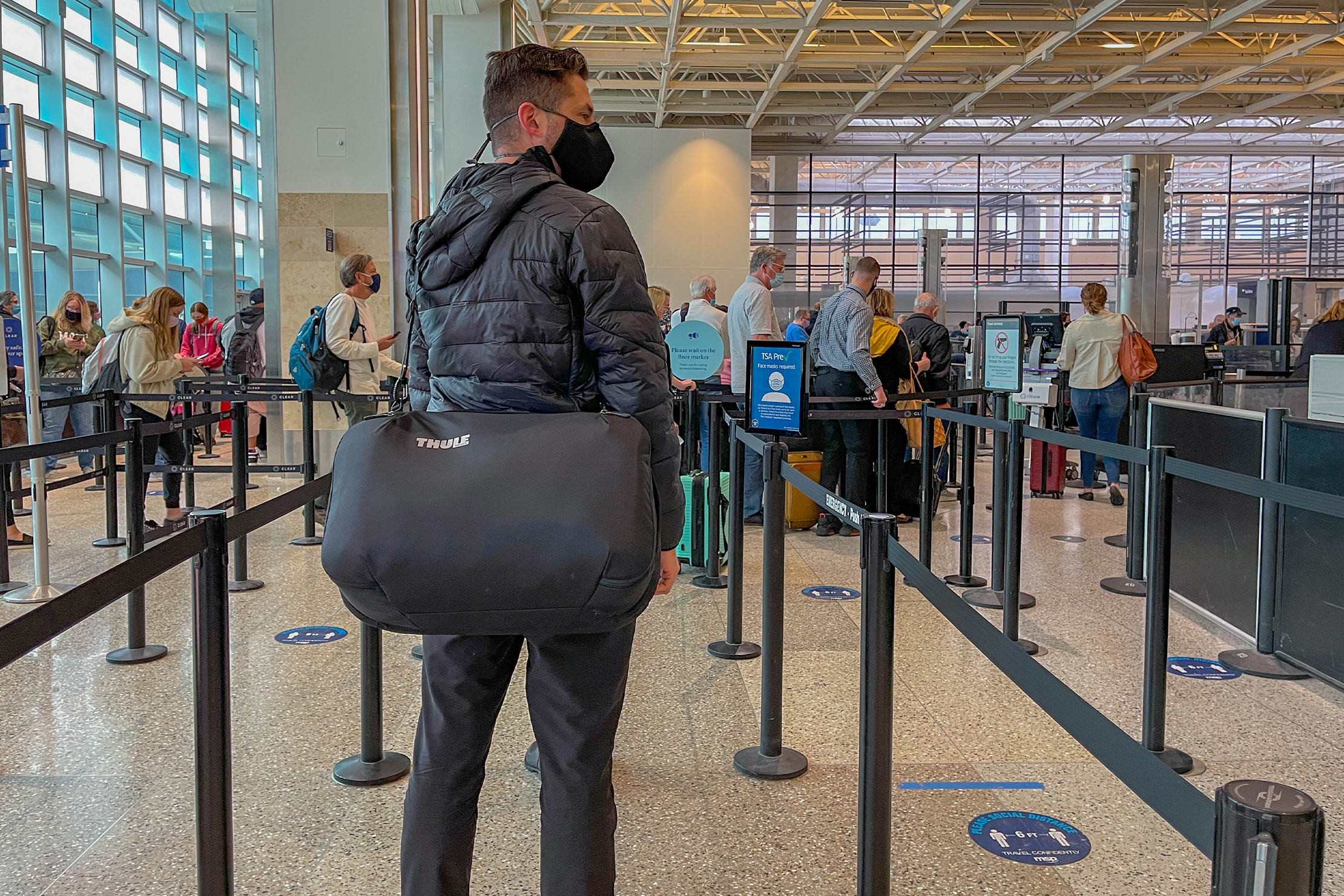
Luckily, the Subterra Convertible comes with a separate crossbody strap that attaches to D-rings along the right side (one of which is the same one the backpack straps use). The strap itself has a good amount of mesh padding that covers enough length that it doesn’t leave us wanting more. We often find crossbody straps like these have too little padding and/or do not slide along for adjustment. Fortunately, that’s not the case here, and we’re able to quickly get cozy with it. The only downside is that because of how big the Subterra Convertible is, it’s easy to accidentally bump people with it when we’re whipping around a crowded place. If only humans came with side mirrors, right? Extra mindfulness is recommended.
Inside The Main Bag
The Subterra Convertible stealthily hides two front compartments: one at the top for everyday carry items and a bottom compartment for shoes. Off the bat, it’s worth mentioning that both of these pockets eat into the main compartment. While they are each spacious in their own right, making full use of that space takes some away from somewhere else. Mind you, it’s not that we find the 40-liter Subterra Convertible to be lacking in space in any way.
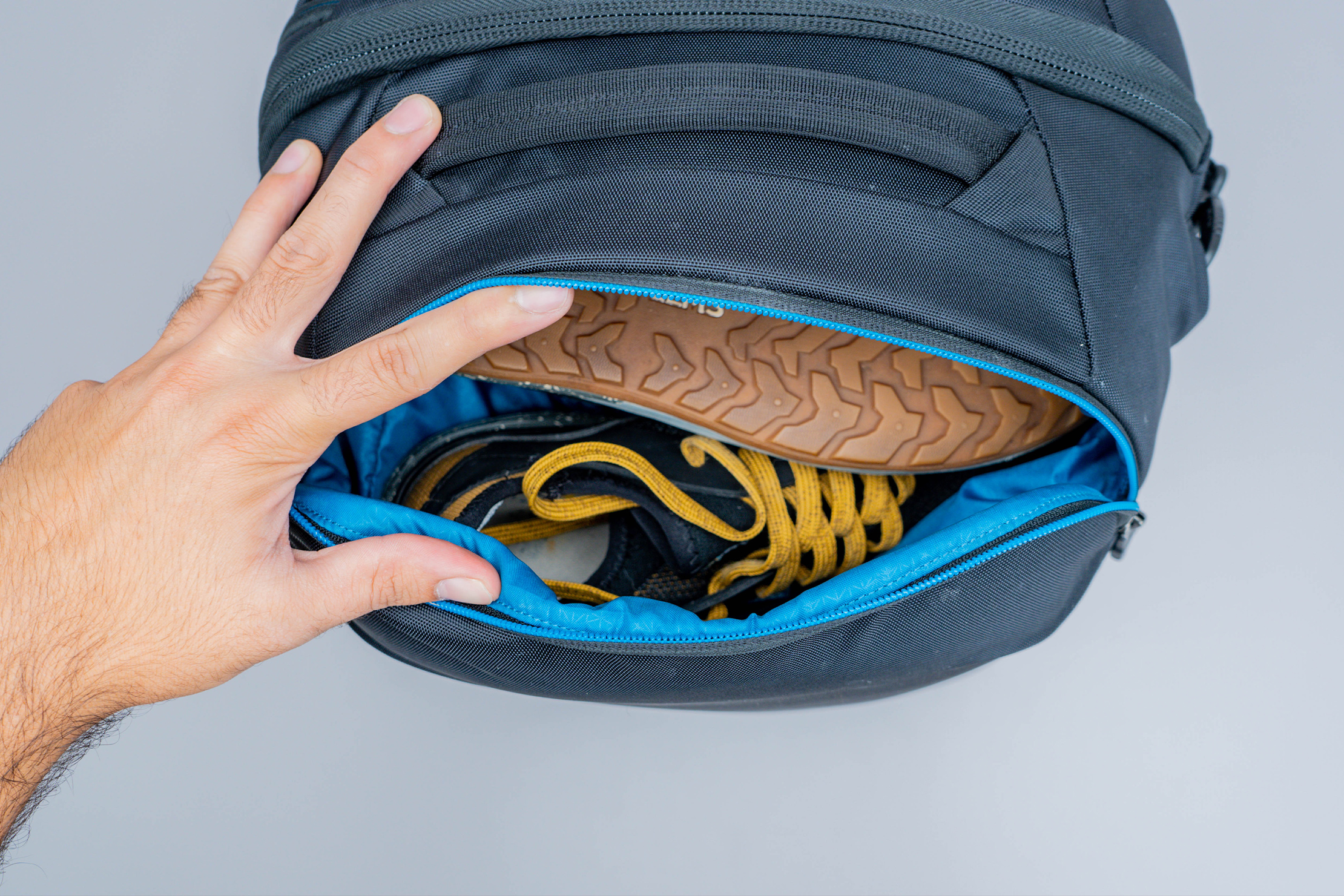
The bottom compartment is able to fit our men’s size ten sneakers with room to spare. While space is, to an extent, not a problem, the shape of the shoes placed inside affects the main compartments in different ways—for example, high heels’ taller profile cut in deeper while wingtip shoes occupy more sideways space.
The top pocket is for quick-grab everyday carry items. Though the space, again, is plentiful, it’s a bit lacking in terms of organization. There’s only a single zippered mesh pocket to use for separating items. On the plus side, the liner inside the mesh pocket is quite soft and suitable for fragile accessories like sunglasses, so you can realistically leave the bulky hard case at home.
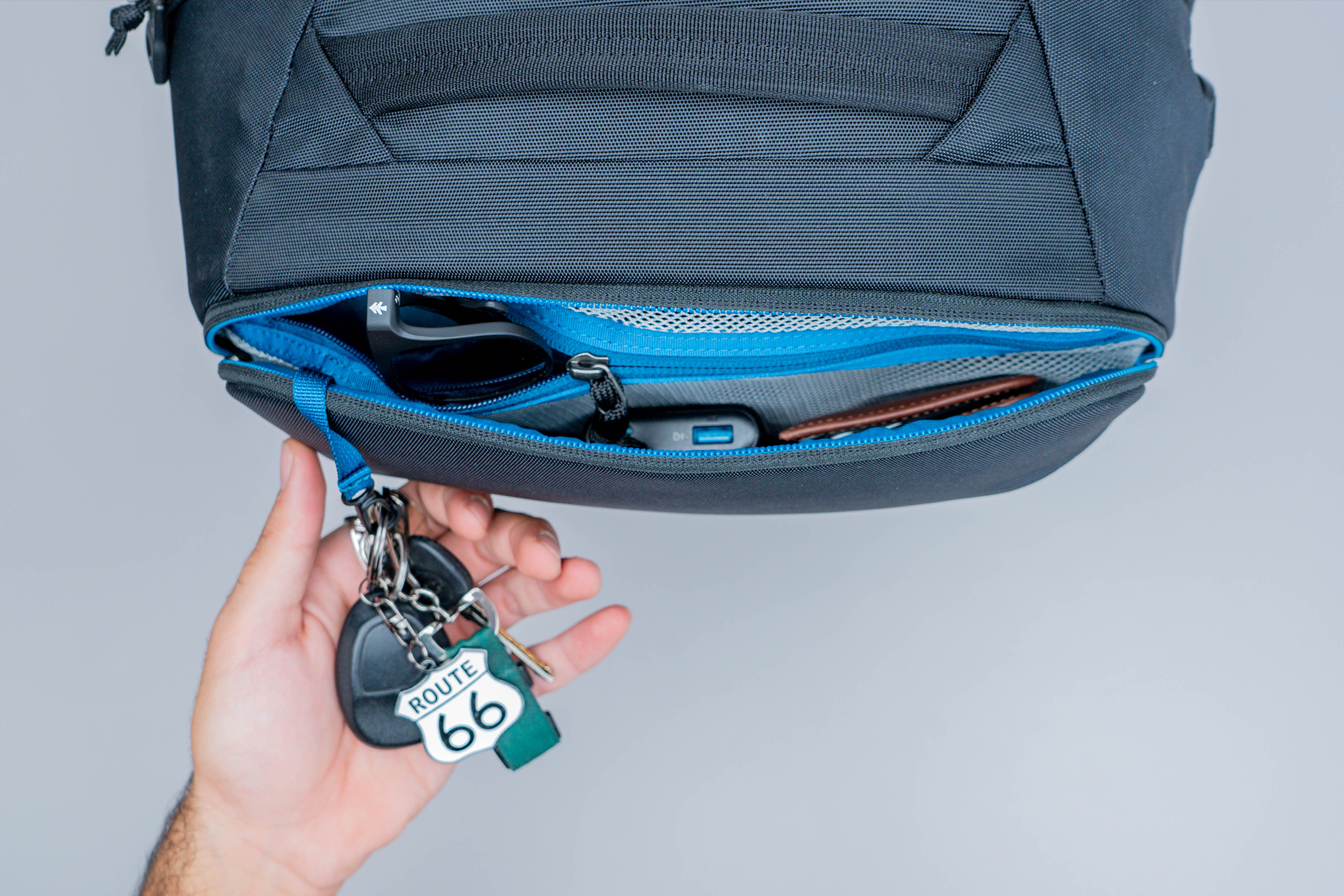
For the most part, though, the pocket’s a dump sack for a lot of items like battery banks, cables, earphones, some snacks, hand sanitizer, etc. Smaller accessories like memory cards can get lost, so a separate pouch is recommended. There’s also a built-in key clip, though the leash is a bit on the short side. The Subterra Convertible is large enough that swinging it around already puts it close to the door, but we still wish the leash was longer.
Like other travel bags, the Subterra Convertible opens fully clamshell-style. The twist is that it opens from the back panel. This is by no means the first bag to do this, as we’ve definitely seen other clamshell bags open from the back panel (the NOMATIC McKinnon Camera Pack comes to mind). The bad news is that this design doesn’t jive well with the other aspects of the Subterra Convertible.
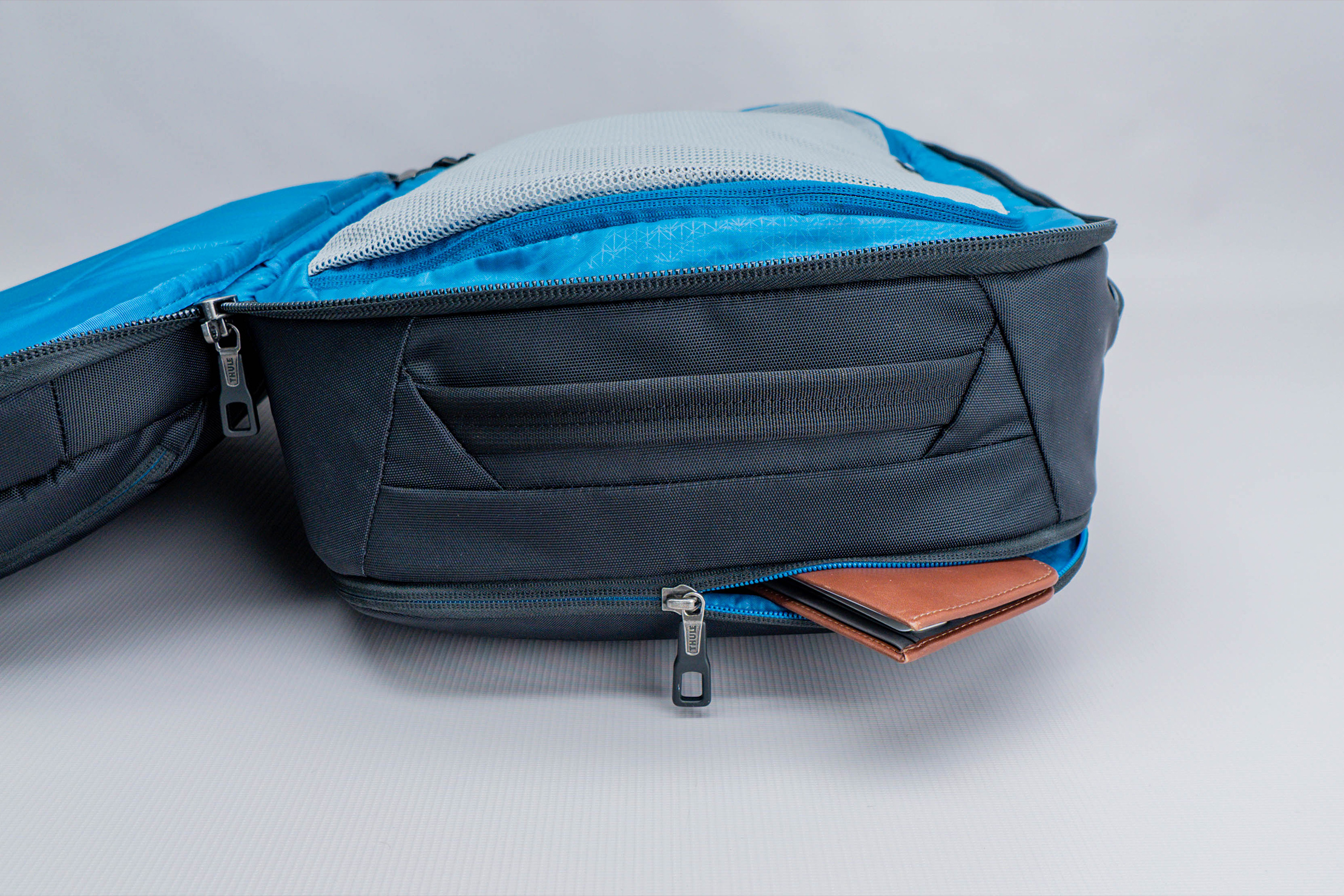
Firstly, when the backpack straps are deployed, the right strap obstructs the back panel from opening. On the one hand, the Duraflex clip is easy enough to detach. On the other hand, that’s only convenient to do somewhere open like a hotel room or an empty terminal. Let’s face it, terminals are frequently crowded, and whenever we’re in tight spaces like those, detaching clips is a hassle we’d rather not go through. Hence, we’re more fans of the crossbody carry.
Secondly, with the Subterra Convertible’s main compartment opened, it puts both the top pocket and shoe compartment underneath the bag. This slows down access to the pockets by a lot, not to mention we have to peek under the bag from the sides. This means we either have to fully unpack our clothes before we can rummage through the top pocket, or we zip it all back up, put the bag upright, and then access the pocket. In short, independently accessing the main compartment and front compartments is the only convenient way to do so.
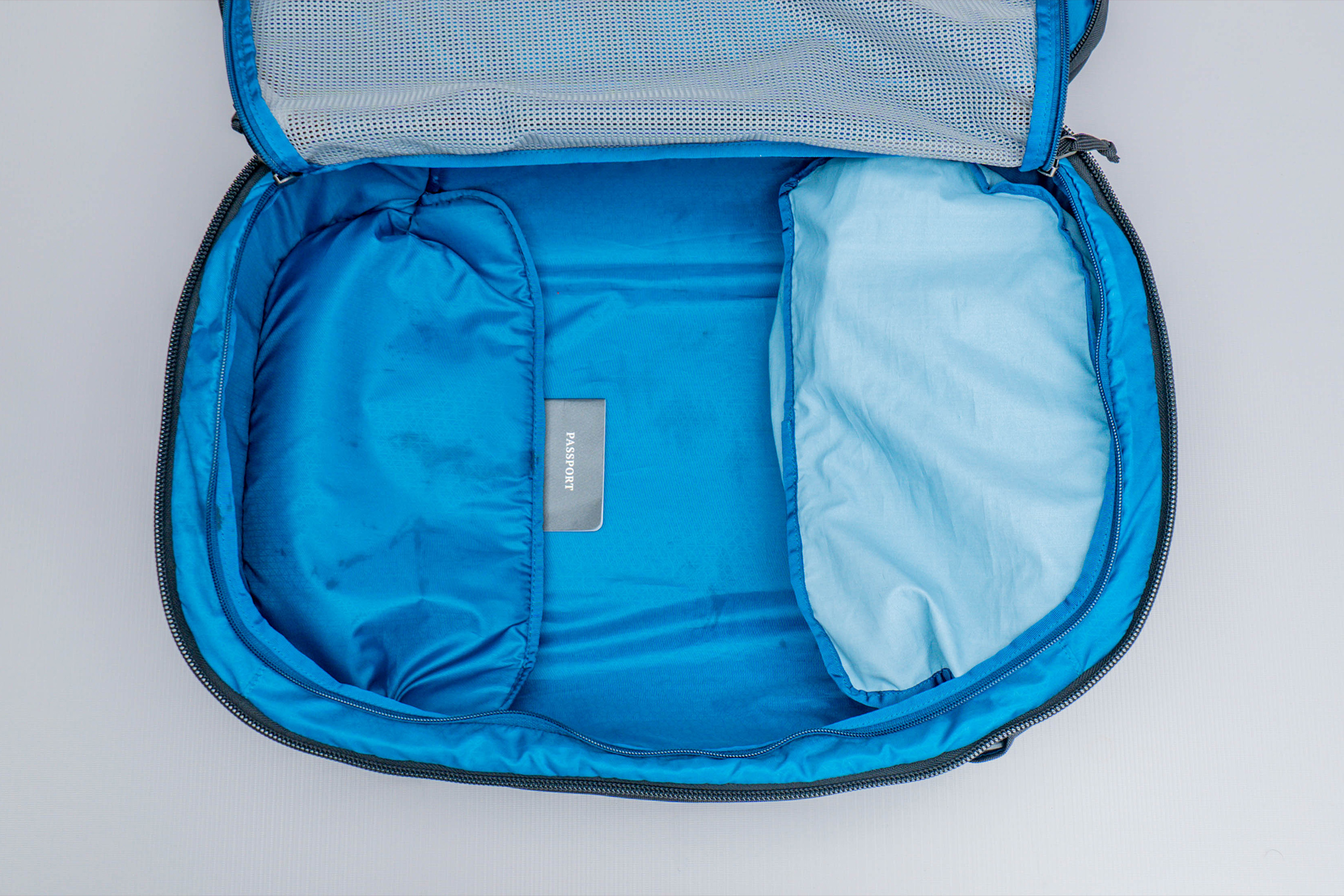
Inside the main compartment, there’s about as much space as one would expect from a 40-liter backpack. Before you can get into that space, there’s a mesh partition that needs to be unzipped. We found this to be somewhat unnecessary since the back panel is nothing but bright blue liner fabric anyway. That said, the Subterra Convertible doesn’t feature any hold-down straps either, so the mesh is the substitute for those looking for a similar feature. We found some stains on the mesh and on some areas of the liner fabric. We’re not sure where this stemmed from as we didn’t have any leaking toiletries inside. Fortunately, the stains are just cosmetic ones without any compromising damage like loose threads.
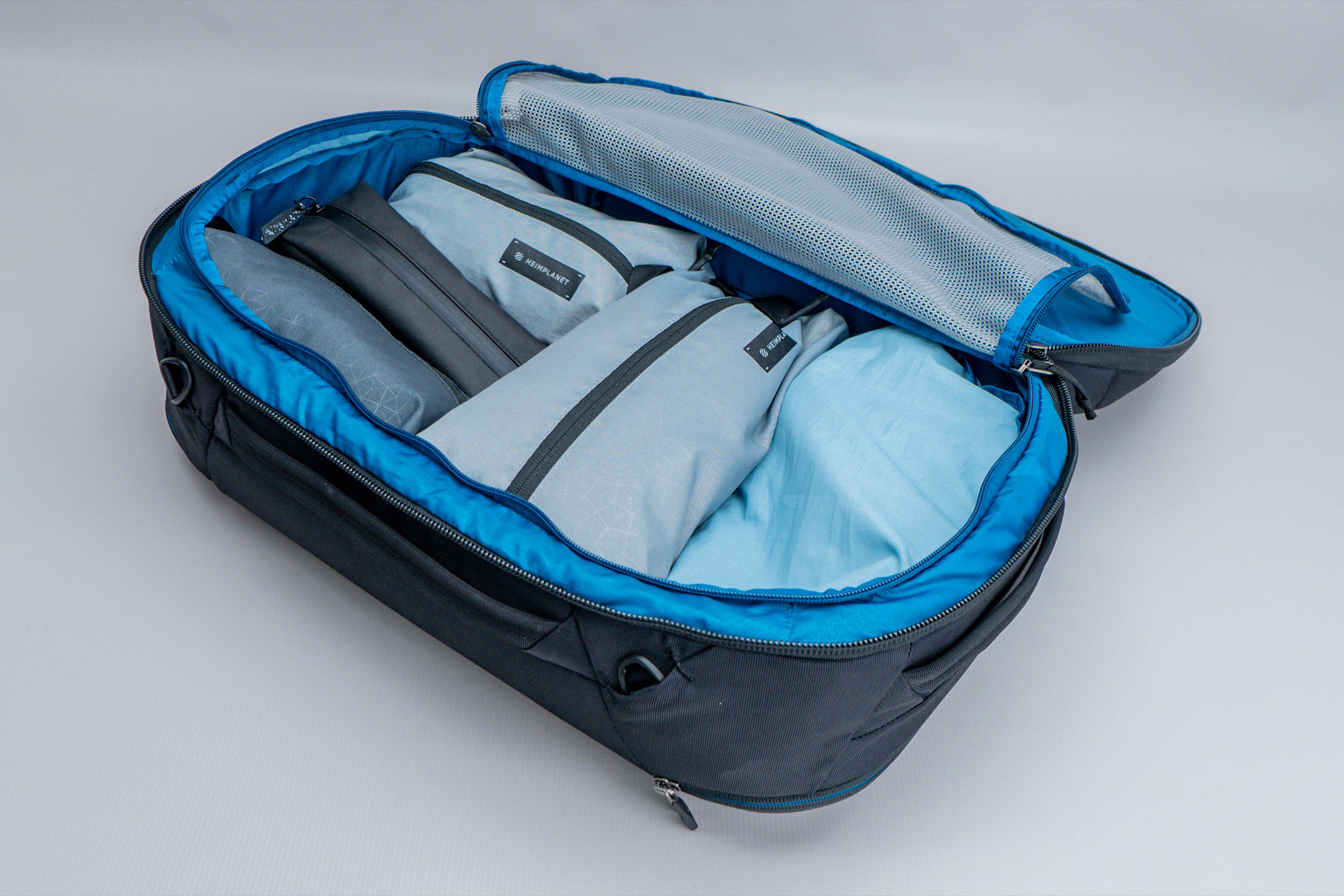
With the mesh out of the way, the big empty tub is wide enough for packing cubes like Peak Design’s medium-sized 5.1-ounce cubes, plus two or three smaller pouches. As mentioned, the top and shoe compartments both cut into the main compartment, so playing around with the space management is something to look into. One hack we found is using those compartments’ pouches to obscure items that need to be hidden from view. For example, other travel documents that are not frequently accessed can be put behind the pouches. Just remember where you put them. Otherwise, you could be searching for quite a while.
Inside The Laptop Sleeve
So far, we’ve discussed a bunch of compartments and pockets, but none of them are dedicated to a laptop. This is where the Subterra Convertible delivers in spades as it comes with a standalone laptop sleeve that’s stuffed away in its own compartment. The look and feel of the sleeve is the same as the main bag’s, though not as structured. It uses the same materials and even gets the same color for its liner fabric. The sleeve compartment is quite spacious, with enough space to fit said laptop sleeve, plus the crossbody strap we heavily favor using with the main bag. Leaving the sleeve at home and using the space for something else is also an option.
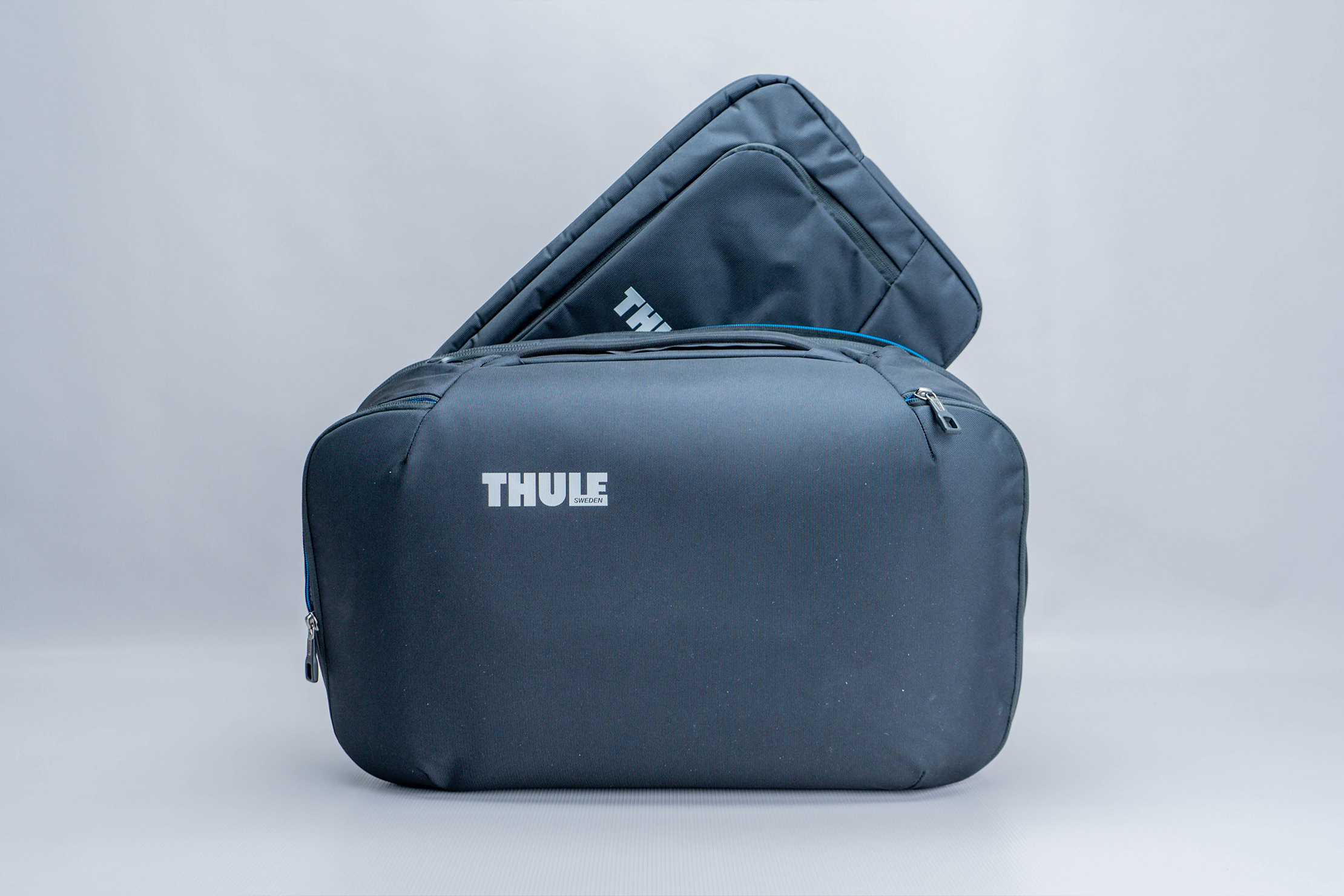
It’s not just a simple sleeve that can be slung using the crossbody strap, though. At the front is a compartment with plenty of pockets for organizing tech accessories. On the right side are two liner pockets and two pen slots, while on the left, there’s a zippered mesh pocket. There are even cable management loops for routing a charging cable between the liner and the mesh pocket. This is a ton more organization than what’s in the main bag’s top compartment, and we definitely wish the two were more similar.
Typical of these front compartments, space definitely isn’t unlimited, and stacking items isn’t ideal. This goes double for the Subterra Convertible since the laptop sleeve stores inside the back panel. This means a bulge in the front compartment bulges out of the back panel, which, in turn, juts into the wearer, especially in backpack mode.
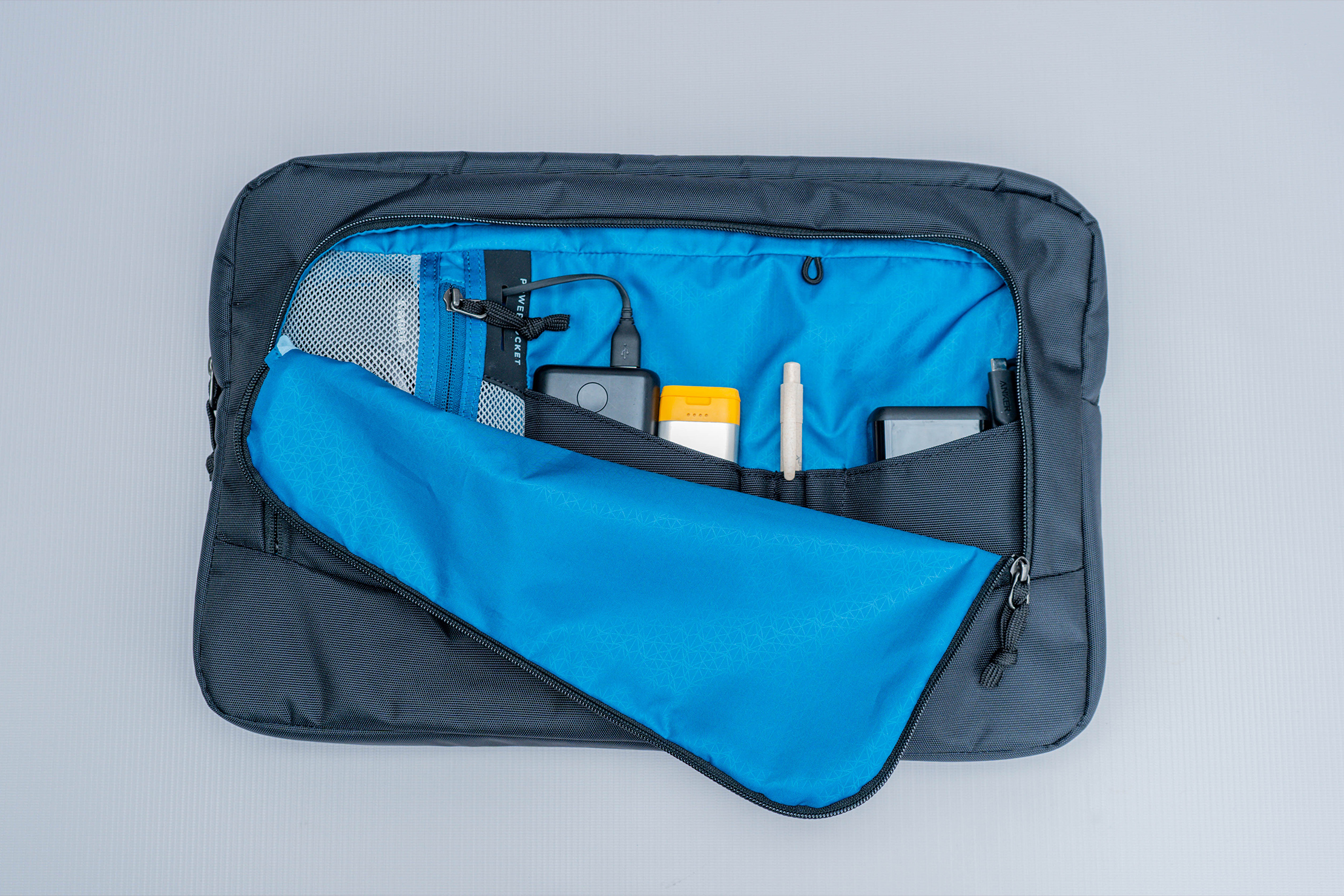
Inside the main compartment, we’re able to fit our 16-inch MacBook Pro easily with a bit of wiggle room at the sides. If the front compartment’s many pockets aren’t enough, we still have the option of using the soft-lined pocket here. It’s actually quite wide, enough for a small tablet or ebook reader to fit inside. All in all, we’re happy to see a laptop sleeve this thoughtfully designed included with the Subterra Convertible—it’s no afterthought add-on, that’s for sure.

If we were to nitpick, the top handle isn’t centered, nor does it have a twin to balance it out. This is a perfect example of what we meant earlier when we said that an off-center handle could cause a tilt. Since the laptop sleeve is fairly light even when we have it fully packed out, this isn’t a major issue for us. Furthermore, we mostly use the crossbody strap, which proves to be the better way of carrying the laptop sleeve, which is the same case as the main bag.
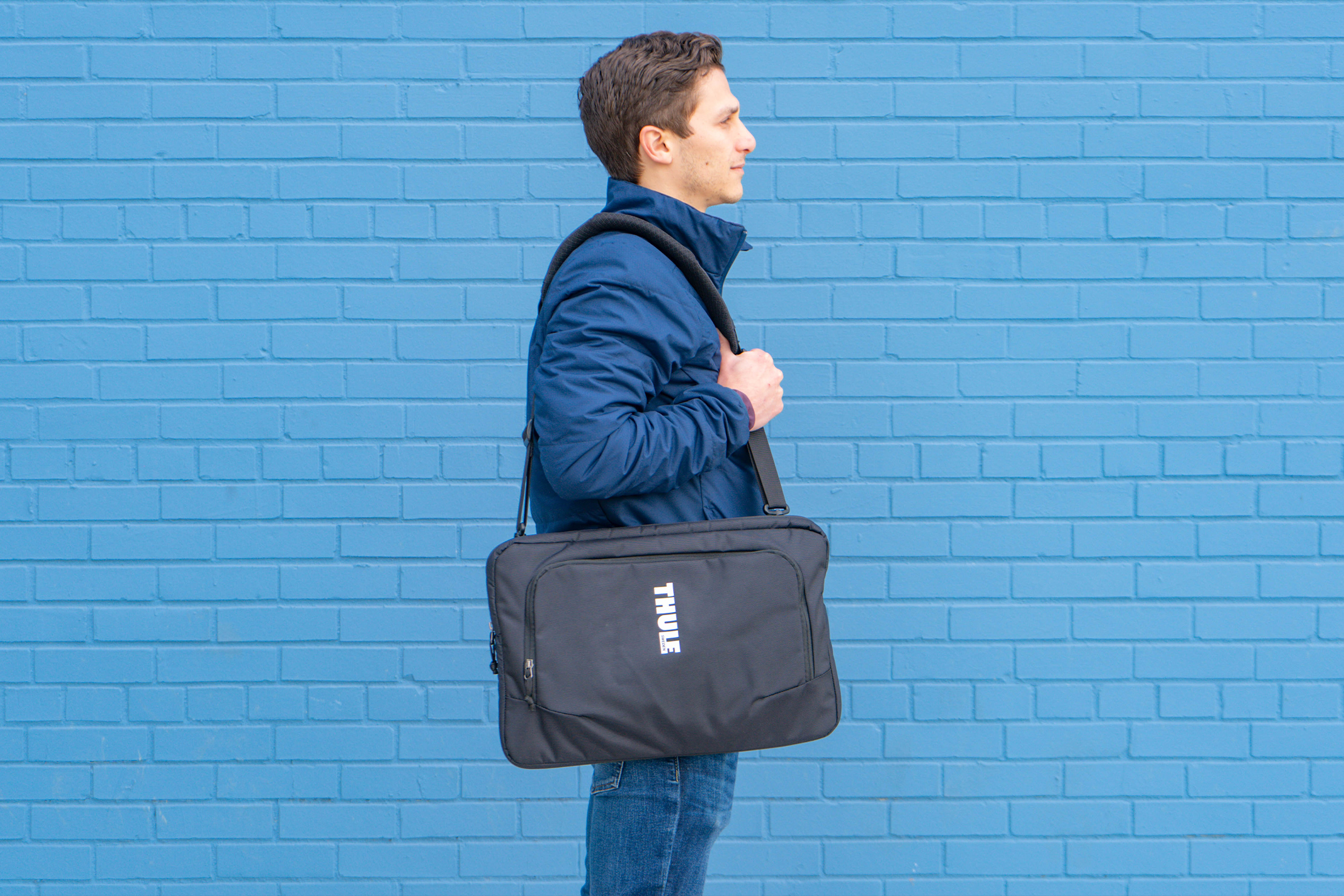
The Subterra Convertible Carry-On’s biggest weaknesses boil down to compartment accessibility and backpack mode comfort, with the latter arguably dependent on the wearer. While it’s not the most quickly accessible carry-on bag under certain circumstances, it’s not a total deal-breaker for us. Plus, the included laptop sleeve is a very persuasive value-add for those already interested in one.
Usage Timeline
Condition: Excellent
- Can be carried as a backpack, duffle, or suitcase
- Outer shell feels rigid and very structured
- Bright liner fabric really helps when you’re searching inside
Condition: Excellent
- This bag is a bit more comfortable with shoulder carry than backpack carry—backpack carry is lacking
- Separate laptop sleeve is a nice touch that can also be used as a dedicated bag using the removable shoulder strap—this worked well
- Dig the structure of the bag—even when not full, it looks good
- The hidden passport pocket is well hidden



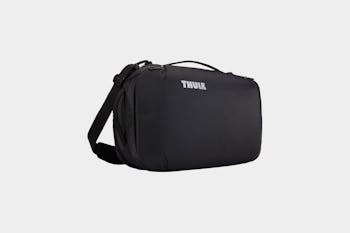






Get your questions about the Thule Subterra Convertible Carry-On answered from our team and the Pro Community right here on the page. Plus, join discussions with other members about gear, guides, and more.
Join Pack Hacker Pro or, Sign In